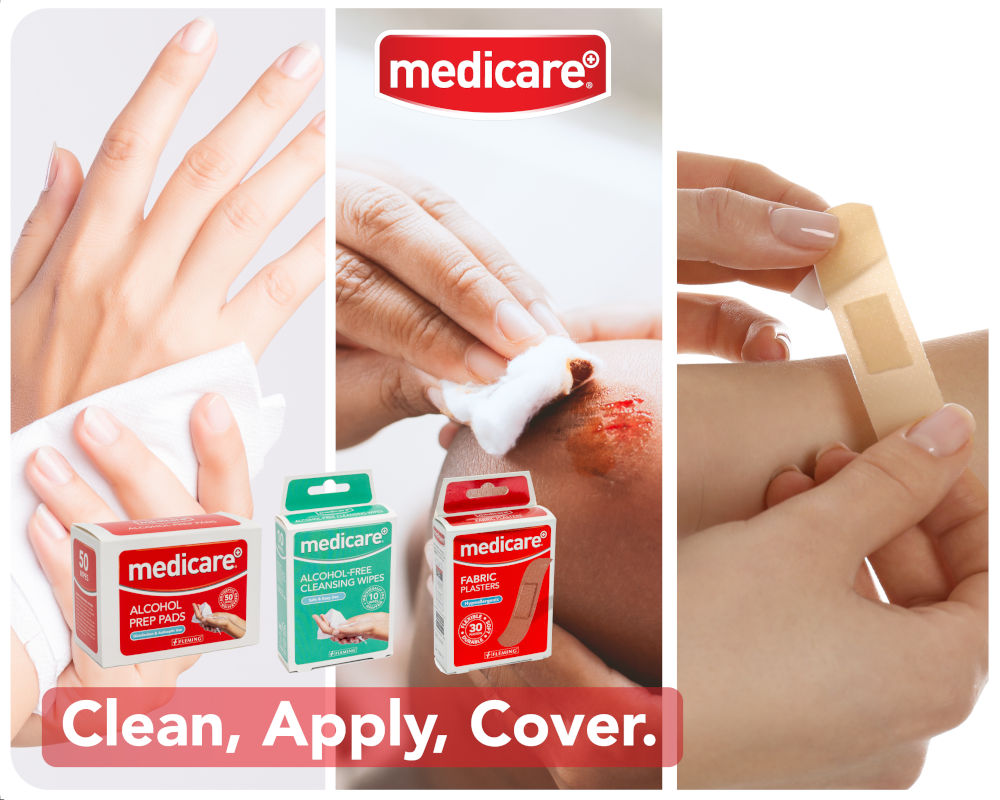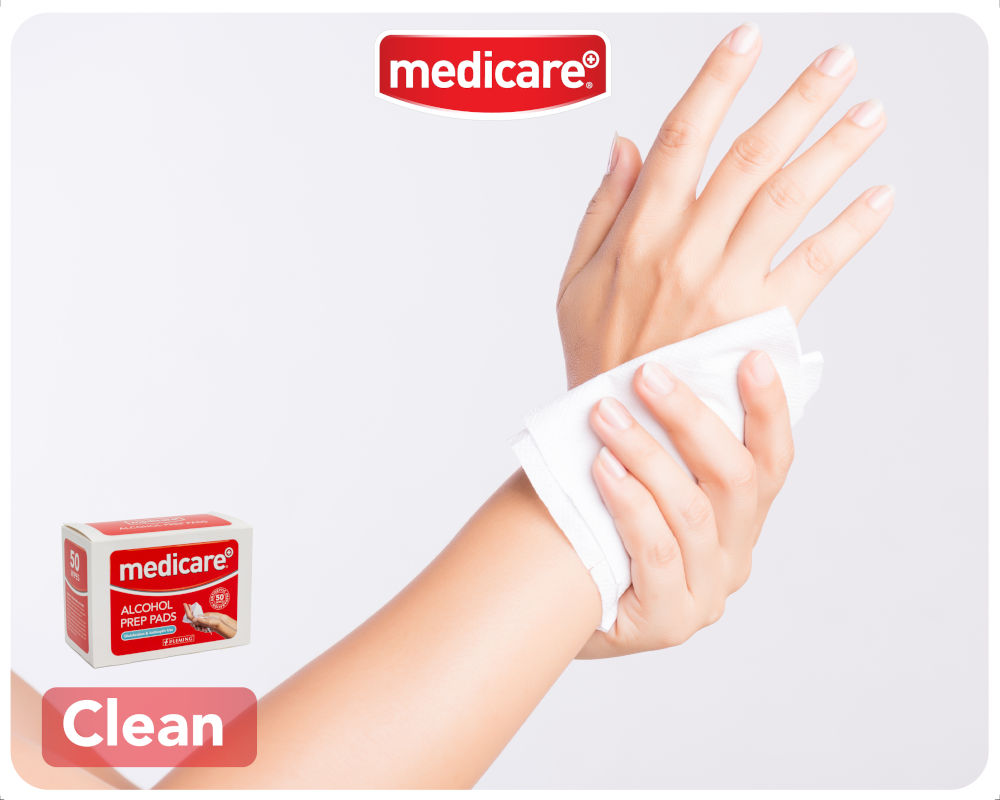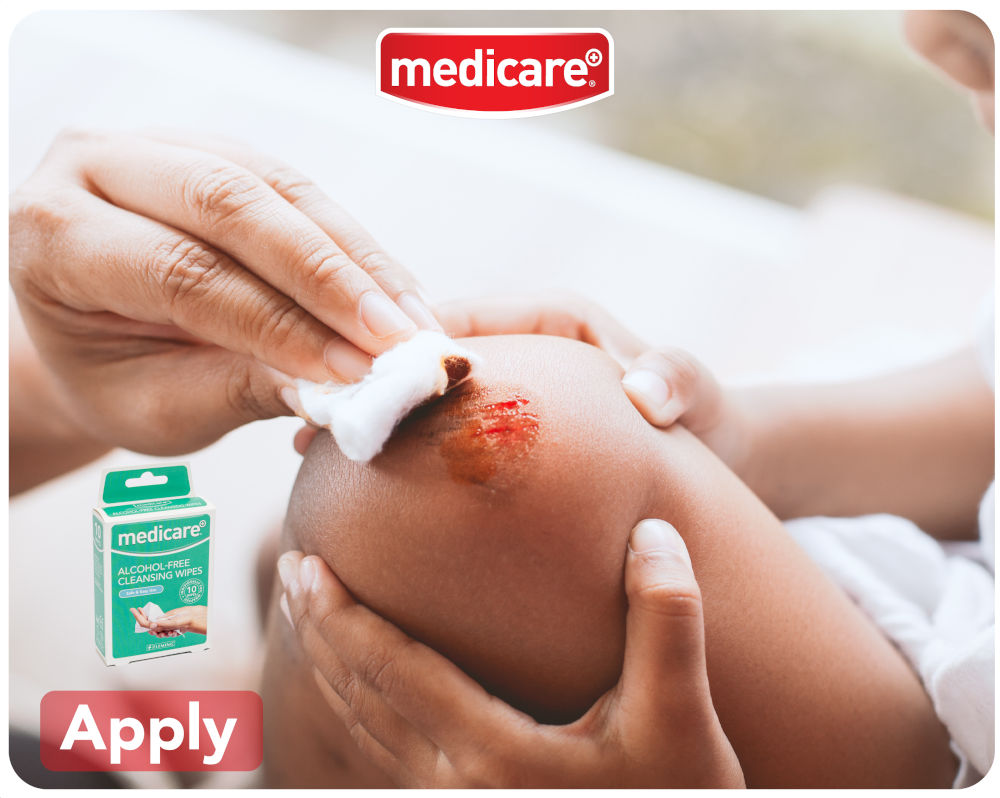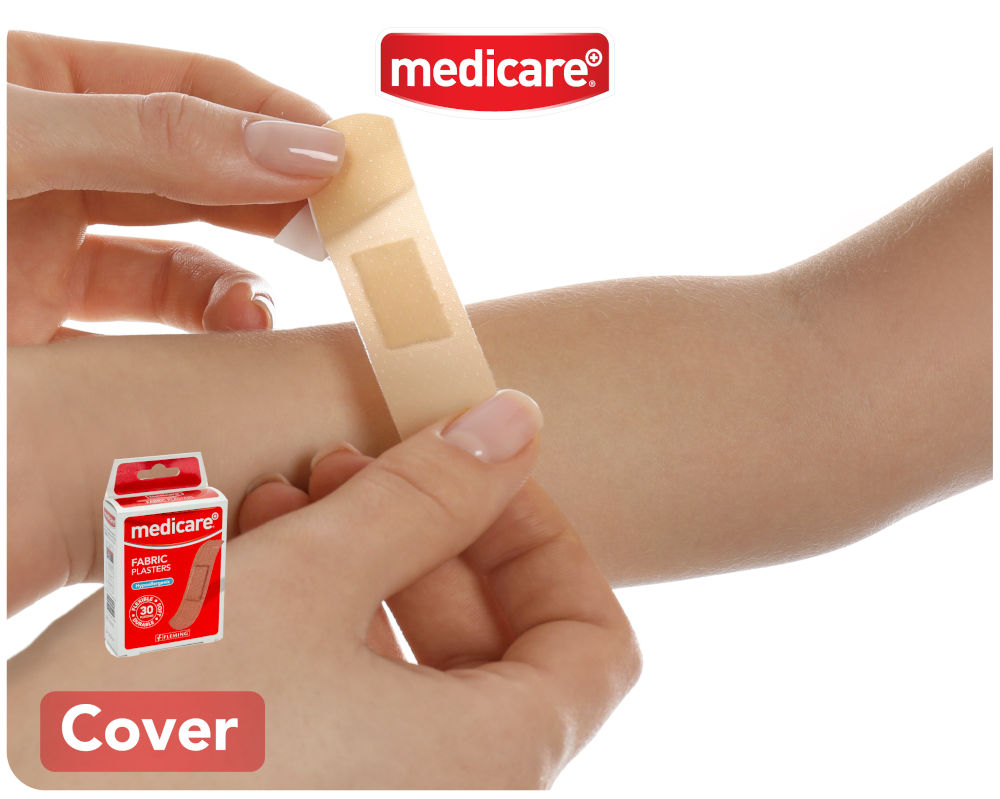Headlines
- Fleming Medical Achieves ISO 13485 Certification – Reinforcing Our Commitment to Patient Safety and Quality
- Gentle Daily Ear Care with Medicare Ear Spray
- Breathe Easy with Medicare Nasal Spray
- Fleming Medical Renews Support for Irish Heart Foundation’s “Before Damage is Done” Campaign with over €25K Donation
- First Response for Minor Burns: Why MD508 Medicare Burn Spray Belongs in Every Medicine Cabinet
Home Woundcare: How to Correctly Treat a Cut or Scrape to Prevent Infection
18 March 2021

Studies show that common cuts and lacerations can have up to a 30% chance of infection. Signs of infection include redness around the cut, yellow or green coloured or cloudy wound drainage, and increased swelling, tenderness, or pain around the cut.
Help prevent cuts or lacerations from becoming infected using this simple 3 step process:


Infections in cuts and lacerations can often come from the hands. Before attending to a cut or laceration, make sure to clean your hands with an alcohol prep pad. Medicare Alcohol Prep Pads have a 99% alcohol content to clear germs away from your hands before you attend to a cut or laceration. Unlike wound cleansers, alcohol prep pads should never be used on open cuts, scrapes and grazes. The alcohol content in prep pads is far greater than that of wound cleansers and is therefore far too high to use on broken skin. Another use for the prep pads is to sterilise the skin before injection. These are especially useful for patients who must daily administer medicine via needle or do frequent skin prick tests, such as those with diabetes.

Applying a non-alcohol solution, spray, cream or wipe to a cut or laceration before covering with a plaster or dressing can help ward off infection, encourage healing and reduce scarring. Medicare Alcohol-Free Cleansing Wipes are ideal for this purpose as they are gentle on skin and are no-sting. Each wipe is saturated with 0.9% sodium chloride solution and 99.1% purified water for gentle cleansing. Applying an alcohol solution on the wound can trigger irritation and pain so non-alcohol alternatives are ideal for ease of use. Medicare have also released a brand new Hypoallergenic Sterile Saline Spray that aids in gentle wound and eye irrigation. Wound healing is supported by this spray that mechanically removes foreign bodies, blood, reduces pathogens and dead tissue whilst also moistening the tissue in the process. It features Bag-On-Valve Technology which allows you to use every drop which contributes to a longer shelf life. It also means that the solution is sterile until the last drop and is preservative-free.

A common misconception with wounds, cuts and scrapes is that leaving it uncovered can help heal it quickly, but this is not the case. Bacteria and dirt can easily enter the wound and lead to infection and a longer recovery period. Covering a cut with a sterile dressing or plaster after cleaning it can ward off infection and promote healing. Medicare Fabric Plasters are hypoallergenic and allow the wound to ventilate, and their skin-friendly adhesive won't irritate the skin. Larger wounds can be covered by an absorbent pad and conforming or crepe bandage to ensure secure fixation. Make sure to change plasters and dressings daily and clean the wound to maintain a positive healing environment.
A great resource for First Aid and Emergency advice is the Irish Red Cross First Aid App.
Simple, Free & Can Save a Life.

 Fleming Medical UK
Fleming Medical UK
